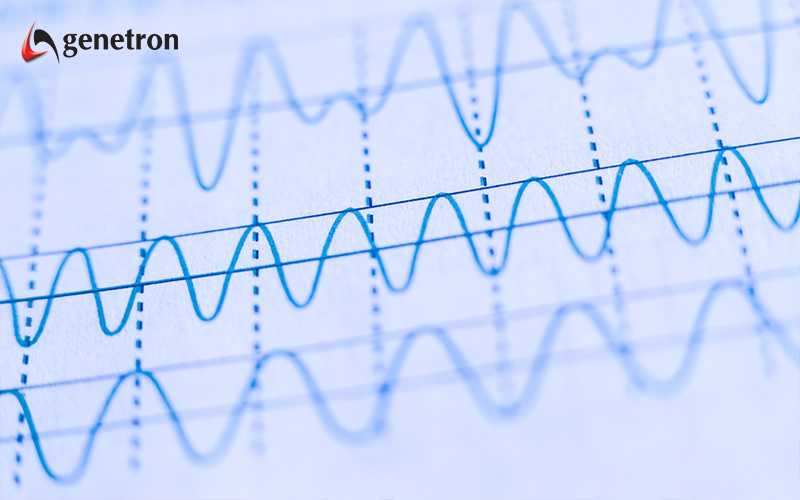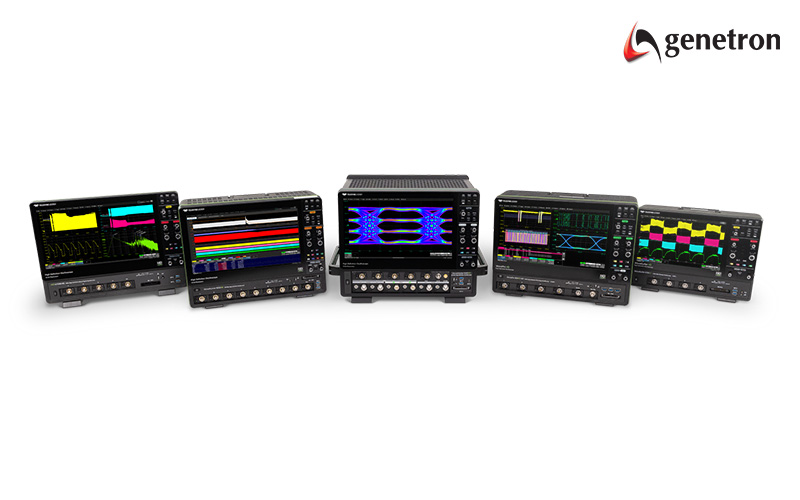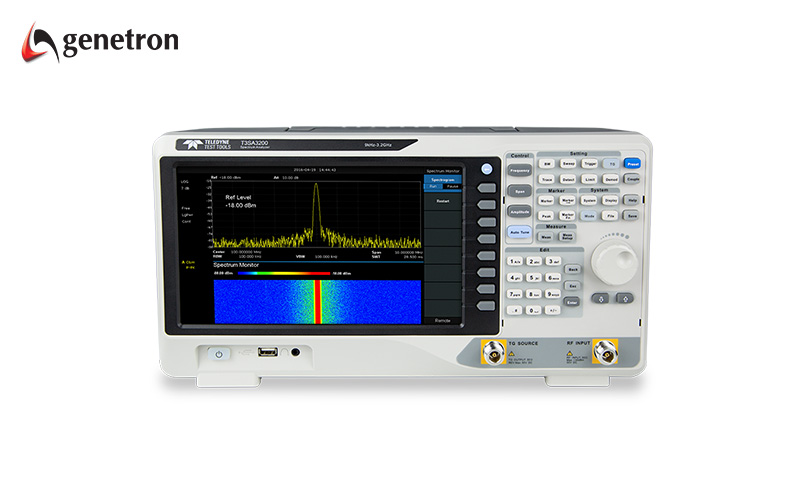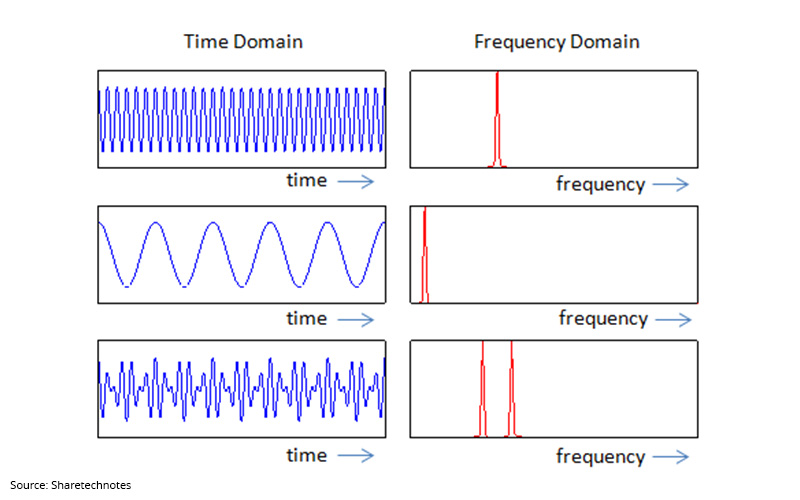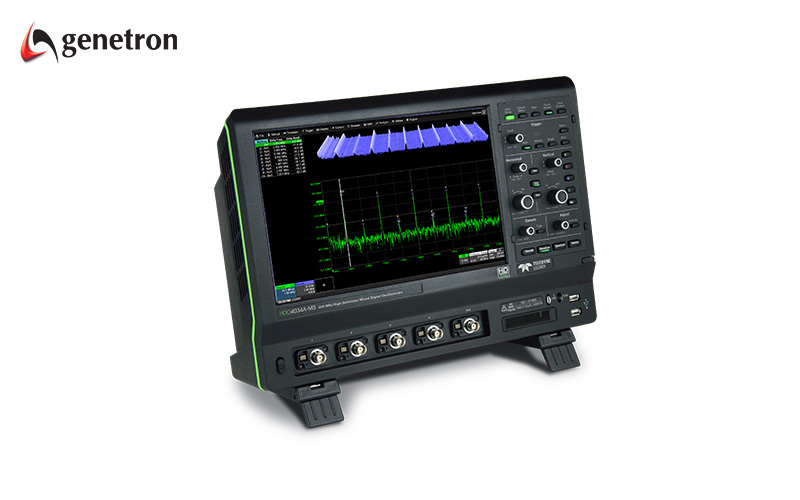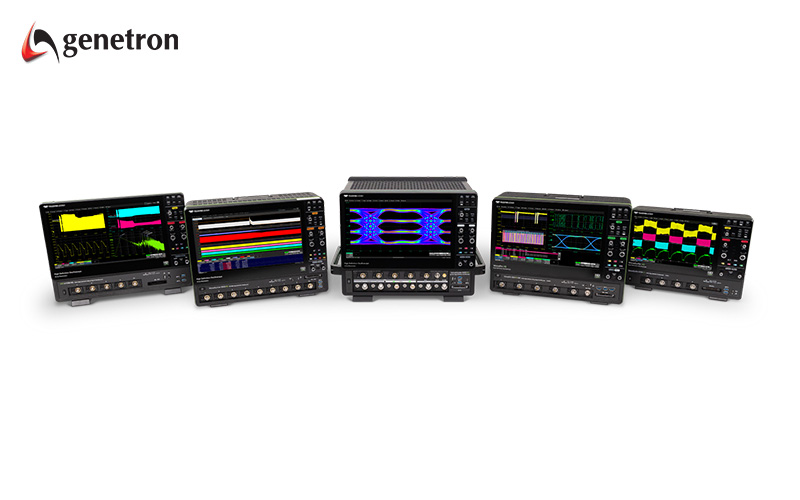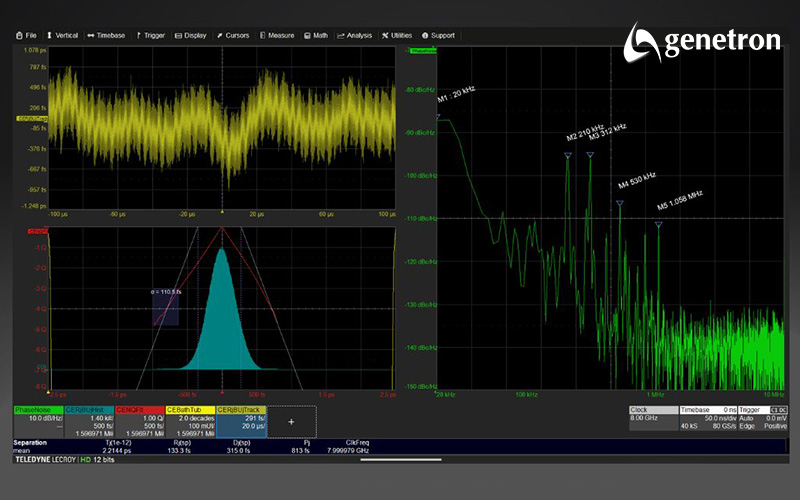In modern electronics, signal analysis tools are crucial for testing and diagnosing complex systems. Amongst these tools, oscilloscopes and spectrum analysers are widely used by engineers and technicians. While both devices help evaluate electrical signals, they are designed for distinct purposes: oscilloscopes focus on time domain analysis, and spectrum analysers specialise in frequency domain analysis. Understanding the difference between an oscilloscope and a spectrum analyser is vital for choosing the right instrument for your application. Here are their key distinctions.
What is an Oscilloscope?
An oscilloscope is a versatile instrument that allows users to visualise electrical signals as part of a time domain analysis. It plots a graph with voltage on the vertical axis and time on the horizontal axis, providing a dynamic view of how signals vary over time.
Key Features:.
- Displays voltage waveforms in real time.
- Offers triggering functions to capture specific events.
- Enables measurements of amplitude, pulse width, rise time, and other signal parameters.
Applications:
- Detecting timing anomalies, such as clock jitter.
- Debugging circuits with irregular signal behaviour.
- Using accessories like the oscilloscope current probe to measure current in a non-intrusive manner.
Oscilloscopes are indispensable for engineers working with time-sensitive circuits or troubleshooting real-time signal variations.
What is a Spectrum Analyser?
A spectrum analyser, on the other hand, evaluates electrical signals in the frequency domain. It displays the amplitude of signals as a function of frequency, helping users identify frequency components, noise, and interference.
Key Features:
- Analyses and displays the frequency spectrum of a signal.
- Measures signal purity, including harmonic distortion and spurious emissions.
- Detects electromagnetic interference (EMI) in electronic systems.
Applications:
- Verifying compliance with regulatory standards for EMI and frequency usage.
- Identifying noise sources and harmonics in Radio Frequency (RF) systems.
- Testing signal generators, oscillators, and wireless communication systems.
Spectrum analysers are ideal for tasks requiring frequency domain analysis, making them essential in RF design, telecommunications, and audio engineering.
Key Differences in Functionality
1. Time Domain vs. Frequency Domain Analysis
The fundamental difference between these tools lies in their domains of operation:
- Oscilloscopes capture how a signal changes over time, providing insight into timing, transitions, and irregularities. This makes them suitable for debugging timing issues like clock jitter or signal spikes.
- Spectrum analysers break signals into their frequency components, offering a clear view of spectral purity and noise. They excel in tasks like identifying interference or evaluating signal harmonics.
2. Applications Across Different Fields
- Oscilloscopes are widely used in fields requiring time-sensitive measurements, such as digital circuit design, embedded systems, and automotive electronics.
- Spectrum analysers are better suited for applications like RF testing, audio signal processing, and electromagnetic compatibility (EMC) testing.
3. Display and Interpretation
- An oscilloscope provides a visual representation of waveforms, making it easier to interpret transient events and repetitive signals.
- A spectrum analyser focuses on amplitude versus frequency, delivering detailed frequency-related insights.
4. Accessories and Extensions
Oscilloscopes can be enhanced with tools like an oscilloscope current probe for current measurement, while spectrum analysers often pair with RF accessories or a network analyser for advanced signal diagnostics.
When to Use Each Instrument
Choosing between an oscilloscope and a spectrum analyser depends on the task at hand:
- For tasks like analysing clock jitter, debugging circuits, or studying transient events, an oscilloscope is the preferred choice due to its time domain capabilities.
- A spectrum analyser is better suited for frequency-related tests, such as identifying interference, evaluating harmonic content, or testing RF signals.
In many cases, both instruments complement each other. For example, addressing clock jitter might require an oscilloscope to study timing irregularities and a spectrum analyser to examine frequency purity.
Oscilloscopes and spectrum analysers are both indispensable tools in electronic design and testing, but their unique functionalities cater to different needs. Oscilloscopes excel in time domain analysis, making them ideal for tasks involving timing and transient signals. Spectrum analysers, with their focus on frequency domain analysis, are better suited for frequency-related diagnostics like EMI testing and harmonic analysis.
By understanding the difference between an oscilloscope and a spectrum analyser, engineers can optimise their signal analysis processes and achieve better results in their projects.
In order for oscilloscopes and spectrum analysers to perform optimally, you will need high-quality devices to complement them. Here at Genetron Singapore, our top-of-the-line oscilloscope current probes and network analysers are designed to produce pinpoint results to help you make accurate analyses in your systems.
For more information about our products, please contact us today.

